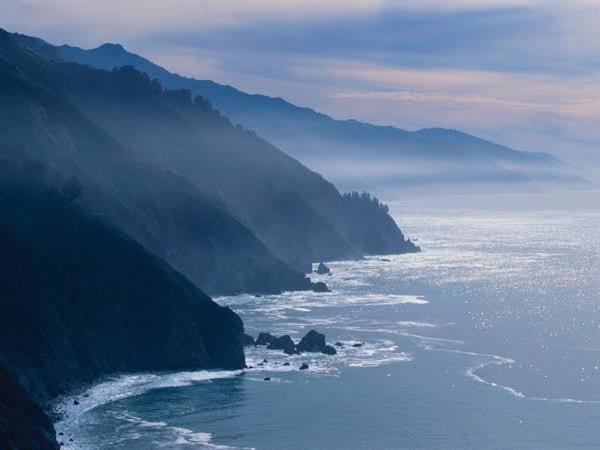The largest ocean on Earth is the Pacific Ocean. Encompassing approximately 63 million square miles (165 million square kilometers), the Pacific Ocean stretches across more than one-third of the Earth's surface. Its vast expanse extends from the Arctic in the north to the Antarctic in the south, and it is bordered by the continents of Asia, Australia, North America, and South America.

The Pacific Ocean owes its name to the Portuguese explorer Ferdinand Magellan, who first referred to it as the "Mar Pacifico," meaning "peaceful sea," due to its generally calm waters compared to the Atlantic Ocean. The Pacific Ocean is characterized by its immense size and depth, harboring some of the Earth's most dramatic geological features, including the Mariana Trench, the deepest known part of the world's oceans.
The Pacific Ocean is a dynamic and diverse ecosystem, supporting a wide array of marine life. Its vast waters are home to countless species, including fish, marine mammals, reptiles, and invertebrates. The Great Barrier Reef, located off the coast of Australia, is one of the world's largest coral reef systems found within the Pacific Ocean, showcasing the incredible biodiversity present in this marine realm.
Notable features within the Pacific Ocean include the Pacific Ring of Fire, a region characterized by frequent volcanic activity and seismic disturbances. This area spans the coasts of several countries, including Japan, the Philippines, Chile, and the western coast of the United States. The Pacific Ring of Fire is known for its volcanoes, earthquakes, and the presence of tectonic plate boundaries, highlighting the dynamic geological processes shaping the Earth's surface.
The Pacific Ocean also plays a significant role in climate regulation. It influences global weather patterns through the circulation of ocean currents and the exchange of heat with the atmosphere. The El Niño-Southern Oscillation (ENSO) phenomenon, which occurs irregularly in the tropical Pacific, has a substantial impact on weather patterns worldwide, affecting rainfall, temperature, and even agricultural productivity.
From a historical perspective, the Pacific Ocean has served as a vital route for exploration, trade, and cultural exchange. It was navigated by early Polynesian voyagers, European explorers, and played a crucial role in the Age of Discovery. The Pacific Ocean witnessed significant historical events, including Captain James Cook's exploration voyages and the transpacific journeys that led to the discovery of the Americas.
In conclusion, the Pacific Ocean is the largest ocean on Earth, encompassing a vast area and playing a crucial role in our planet's climate, biodiversity, and human history. Its sheer size, diverse ecosystems, and geological features make it a captivating and awe-inspiring body of water. From its tranquil stretches to its tumultuous volcanic regions, the Pacific Ocean stands as a testament to the magnificence and power of Earth's oceans.